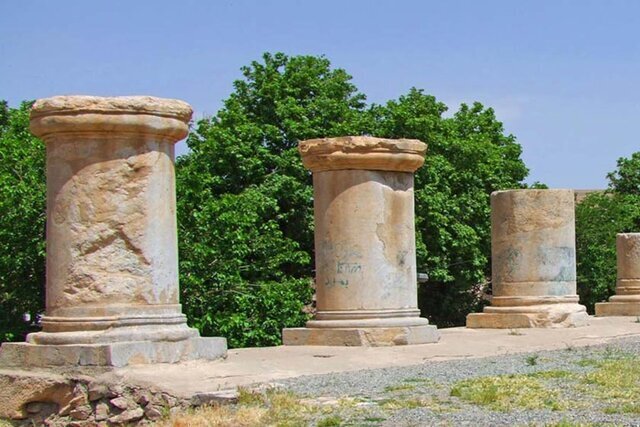Temple of Anahita in western Iran undergoes restoration

TEHRAN – A restoration project has been commenced on the ancient temple of Anahita, which is located in the city of Kangavar, western Iran.
“After 20 years of silence in the Anahita Temple, a restoration project has begun on the southwestern side of this historical sanctuary,” Morteza Geravand, the director of the ancient site, announced on Tuesday.
In this part of the temple, there are four rows of 12-meter-long walls, the restoration of which is on the agenda, the official said.
“The restoration work has started on the south side of the temple from the first-row stairs with a length of 12 meters and we have placed some of the stones and capitals in place inside these stairs,” the official explained.
The Anahita Temple is the name of one of two archaeological sites in Iran popularly thought to have been attributed to the ancient deity Anahita. The larger and more widely known of the two is located at Kangavar in Kermanshah province. The other is located at Bishapur of the southern Fars province.
Anahita, also known as Anaitis, and Anahit, was an ancient Iranian goddess of royalty, water, and fertility; she is particularly associated with the last.
Possibly of Mesopotamian origin, her cult was made prominent by Artaxerxes II, and statues and temples were set up in her honor throughout the Persian empire.
A common cult of the various peoples of the empire at that time, it persisted in Asia Minor long afterward. In the Avesta she is called Ardvi Sura Anahita (“Damp, Strong, Untainted”); this seems to be an amalgam of two originally separate deities, according to Britannica.
In Greece, Anahiti was identified with Athena and Artemis. She is mentioned in the sacred book of Zoroastrianism, the Avesta, note, and three Achaemenid Royal Inscriptions from the reign of Artaxerxes II Mnemon (r.404-358 BCE). There were sanctuaries for Anahita in Bactra, in Ecbatana, in Artaxata, in Zela, and Hierocaesarea, according to Livius.org; a website on ancient history written and maintained since 1996 by the Dutch historian Jona Lendering.
The goddess is also represented in Darabgird and Taq-e Bostan. Modern scholars have suggested that Anahita was also venerated at Kangavar, Qadamgah, and Bishapur, where sanctuaries have been found that can plausibly be identified as water temples. However, not every aquatic deity automatically equates with Anahita, so there is room for doubt.
AFM/
Leave a Comment